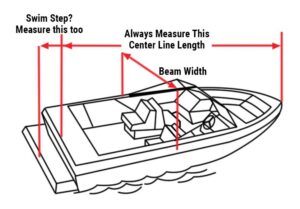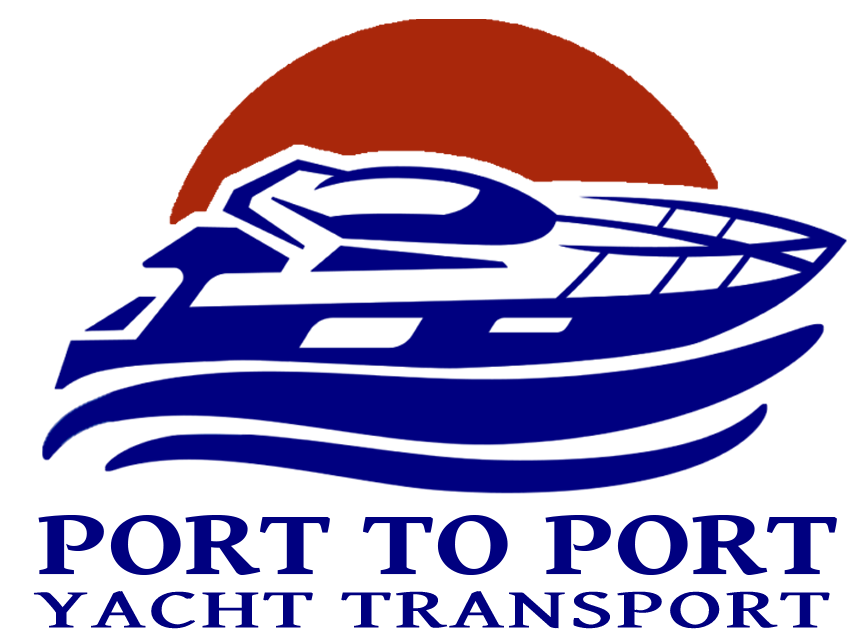Table of Contents
ToggleMeasure Your boat for Transport like a Genius!
Measuring your boat or yacht for transport is a crucial step to ensure it fits safely and securely on a trailer or transport vessel. Here’s a step-by-step guide on how to properly measure your boat or yacht for transport: We have included additional links for examples showing exactly what to include in your measurements. So let’s measure.
Gather the Necessary Tools and Equipment:
- Measuring tape
- Level
- Chalk or masking tape
- Note pad and pen
- Safety equipment (if needed)
Choose a Suitable Location:
- Park the boat or yacht on a level surface, ideally in an area where you have enough space to work around it.


Measure the Length:
- Measure the overall length of the boat from the bow (front) to the stern (back). Include any protruding features like bowsprits or swim platforms in your measurement.
Measure the Width:
- Measure the maximum beam (width) of the boat, typically at the widest point, which is usually amidships. Make sure to include any protruding features like rub rails or rails in your measurement.
Measure the Height:
- Measure the height of the boat from the bottom of the keel (or the lowest part of the hull) to the highest point above the waterline, which may include antennas, radar masts, or other fixtures. If your boat has a retractable mast, measure both in the raised and lowered positions if relevant for transport.
Document all the sizes:
- Write down all the sizes you’ve taken, including length, width, and height. Ensure that you record these accurately.
Mark the sizes:
- Use chalk or masking tape to mark the boat’s dimensions clearly on the hull. This makes it easier for the transport company or trailer operator to position the boat correctly during transport.
Consider Special Provisions:
- If your boat has a deep keel, protruding anchor, or other features that could affect transport, be sure to note these and communicate them to the transport company. Special provisions may be needed.
Consult Local Regulations:
- Check with local and state regulations to ensure your boat’s complete size so to comply with road transportation rules. Overwide, overheight, or overlength boats may require permits or additional documentation to transport legally.
Hire a Professional Transport Company:
- To transport a boat safely, especially if it’s a large yacht or requires long-distance transport, it’s best to hire a professional boat transport company. They have the experience and equipment necessary to handle the job safely and legally.
Remember that measuring your boat accurately is essential to avoid any issues during transport. It’s also crucial to communicate effectively with the transport company to ensure they have all the necessary information to transport your boat safely and within legal limits.
In addition to the basic measurements, there are several other important aspects to consider when measuring your vessel for transportation. These factors ensure the safe and successful transport of your boat or yacht:
Weight:
- Determine the weight of your boat, including all equipment, fuel, water, and any additional cargo. This is crucial for selecting an appropriate trailer or transport vessel and ensuring that weight limits are not exceeded.
Clearance and Bridge Height:
- Measure the clearance height of your boat, including antennas, masts, or other high structures. Verify that the route your boat will take during transport has sufficient clearance, especially when passing under bridges.
Trailer or Transport Vessel Specifications:
- Ensure that the trailer or transport vessel you plan to use is suitable for your boat’s size, weight, and dimensions. Check the trailer’s load capacity and any specific requirements for your vessel’s hull design.
Transport Permits:
- Determine if you need any special permits for oversized or overweight loads, and obtain them if necessary. Different states and countries have varying regulations regarding boat transport.
State and Federal Regulations:
- Familiarize yourself with state and federal regulations governing the transportation of boats, including width, height, and weight restrictions. Compliance with these rules is essential to avoid legal issues during transport.
Escort Vehicles:
- Depending on your boat’s size and the transport route, you may need escort vehicles to accompany the transport. These vehicles help with traffic control and ensure the safety of the operation.
Securement and Tie-Downs:
- Properly secure your boat to the trailer or transport vessel using appropriate tie-downs, straps, and other equipment. Ensure that the boat is stable and won’t shift during transit.
Protect Vulnerable Areas:
- Protect vulnerable areas of the boat, such as the hull, by adding padding or protective materials where straps or supports will make contact. This helps prevent damage during transport.
Insurance:
- Verify your insurance coverage and consider additional coverage specifically for the transport process. Ensure you have adequate coverage in case of accidents or damage during transport.
Communication:
- Maintain open communication with the transport company throughout the process. Discuss any concerns or special requirements with them to ensure a smooth and safe transport.
Pre-Transport Checklist:
- Create a checklist of pre-transport tasks to ensure everything is in order before the boat is moved. This may include disconnecting utilities, securing loose items, and inspecting the boat for any pre-existing damage.
Weather Considerations:
- Keep an eye on weather forecasts along the transport route. Inclement weather can affect the safety and timing of the transport, so be prepared for potential delays or adjustments.
By paying attention to these additional aspects and taking the necessary precautions, you can ensure a successful and safe boat or yacht transport experience. It’s always advisable to consult with a professional boat transport company, as they have the expertise to navigate these complexities and ensure your vessel reaches its destination intact.
